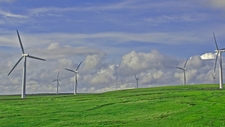Natural Resources

TEKS Objective
The student is expected to explore the characteristics of natural resources that make them useful in products and materials such as clothing and furniture and how resources may be conserved.
Essential Understanding
The student knows that Earth consists of natural resources and its surface is constantly changing.
Signature Lesson
Developing an Object or Tool: BioEd Online (website) - Student teams explore the characteristics of natural resources and establish the process through which a natural resource (e.g., a tree) becomes a finished product (e.g., a wooden chair). Teacher background included.
- Supporting Lessons
- Extensions
- Assessment Ideas
- Literature Connections
- Related
TEKS - Additional Resources
Supporting Lessons
Is It Natural or Transformed? BioEd Online (Website) - The class will examine, sort, distinguish and discuss natural and processed materials. Teacher background included.
Is it Natural or Transformed?
BioEd Online, www.bioedonline.org
Materials and Manufacturing: Science NetLinks (website) - Students examine different materials, identify their properties, and determine their suitability for different purposes.
Materials and Manufacturing
Science NetLinks, www.sciencenetlinks.com
Recycled Materials: Science Netlinks (website) - This lesson builds on the previous one by having students identify materials that can be recycled and find possible uses for the recyclable materials.
Recycled Materials
Science NetLinks, www.sciencenetlinks.com
Natural Resources, Renewable vs. Nonrenewable: Lessonsplanspage.com (website) - Explains the importance of preserving natural resources and the characteristics of renewable and non-renewable resources.
Natural Resources, Renewable vs. Nonrenewable
by Cynthia Gaucin, LessonsPlansPage.com
Elaboration Lessons and Extensions
Natural Resources on Earth: NASA (PDF) – Lesson introduces students to the natural resources that help us live and allow plants to grow.
Natural Resources on Earth
NASA, www.nasa.gov
Where Did that Pencil Come From? Econedlink.org (website) - Students determine what goods can be produced using natural resources, identify which natural resources contribute to the production of a particular item, and identify natural resources on a map.
Assessment Ideas
- Assign each student a non-renewable resource, or allow students to choose their own.
- Have students work in teams to come up with two new uses for each material chosen.
- Students should record their ideas in a science journal, using words and pictures to show two uses of the objects.
Literature Connections
Sustaining Our Natural Resources. Green, Jen (ISBN-10: 1410943283)
A Refreshing Look at Renewable Energy with Max Axiom, Super Scientist. Krohn, Katherine E. (ISBN-10: 1429639024)
The Way to Start a Day. Baylor, Byrd (ISBN: 0-689-71054-2)
The Earth's Resources: Renewable and Non-Renewable. Harman, Rebecca (ISBN-10: 1403470618)
Additional Resources
How to Make Paper: About.com (website) - Learn how to make decorative paper with flower petals and bits of recyclable paper (video).
TEKS Navigation
Grade 3
Need Assistance?
If you need help or have a question please use the links below to help resolve your problem.

Comments